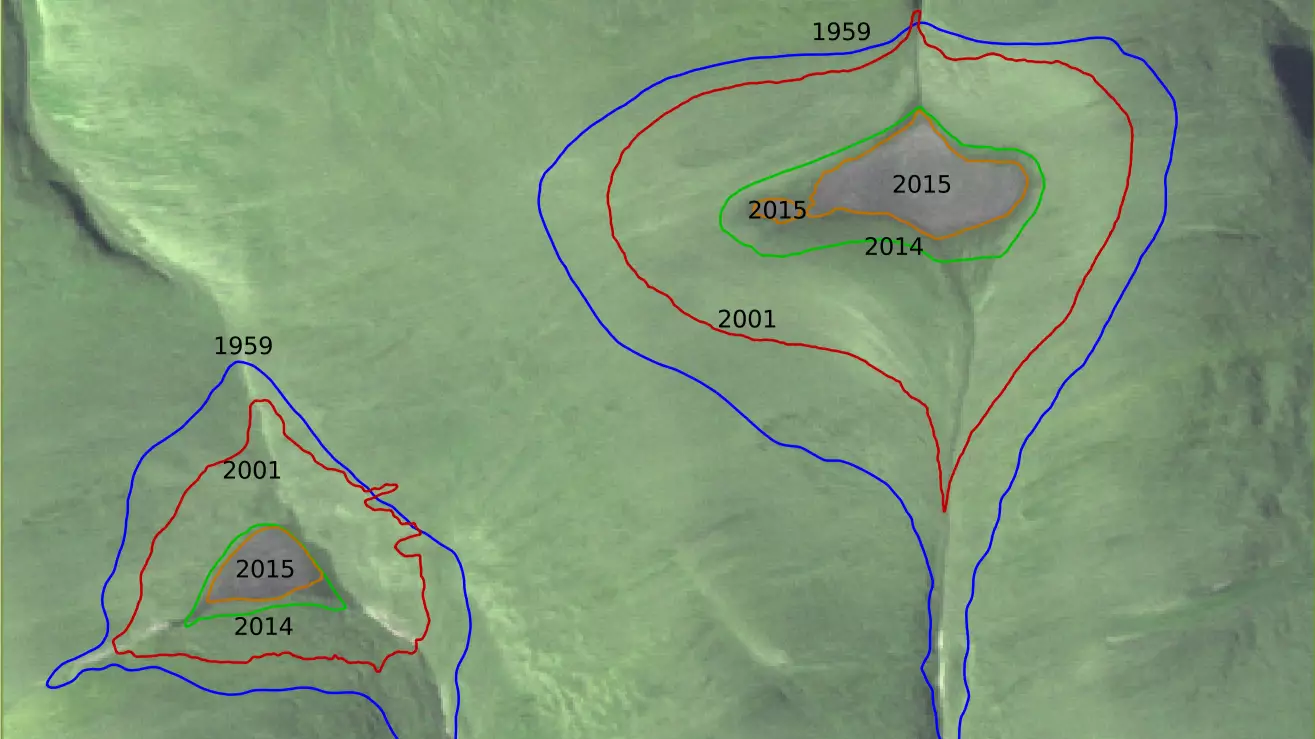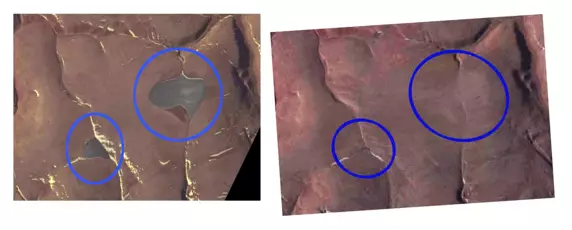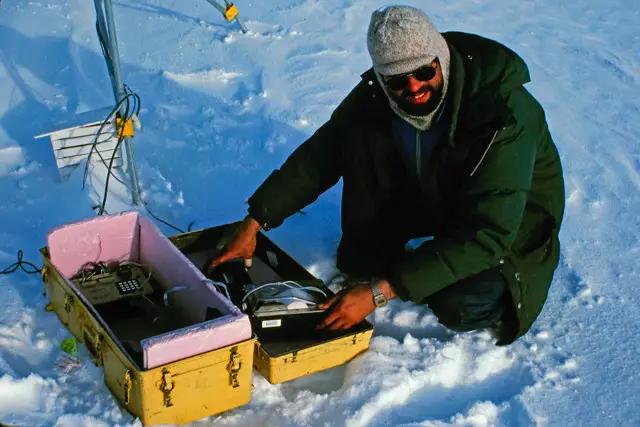
NASA satellite imagery shows two Arctic ice caps have disappeared and it's all down to climate change.
National Snow and Ice Data Center (NSIDC) scientists predicted that the ice caps would melt out completely within the next five years, and recent images from NASA's Advanced Spaceborne Thermal Emission and Reflection Radiometer (ASTER) have confirmed that this prediction was accurate.

Mark Serreze, director of NSIDC, first set foot on the St. Patrick Bay ice caps in 1982 as a young graduate student.
Advert
He said: "When I first visited those ice caps, they seemed like such a permanent fixture of the landscape. To watch them die in less than 40 years just blows me away."
In 2017, scientists compared ASTER satellite data from July 2015 to aerial photographs taken in August 1959.
They discovered the ice caps had been reduced to only five percent of their former area during this time, and shrank noticeably between 2014 and 2015 in response to the especially warm summer in 2015. The ice caps are absent from ASTER images taken on July 14, 2020.

The Murray and Simmons ice caps, also on the Hazen Plateau, are located at a higher elevation and are doing slightly better, though scientists still predict they won't last much longer.
Advert
Serreze went on: "We've long known that as climate change takes hold, the effects would be especially pronounced in the Arctic. But the death of those two little caps that I once knew so well has made climate change very personal. All that's left are some photographs and a lot of memories."

Last month, a study found that the South Pole is warming three times faster than the rest of the world.
It was long thought that the pole may be resistant to global warming, but research published this year in Nature Climate Change suggests otherwise.
Advert
A data analysis found that the South Pole has been warming three times as rapidly over the past three decades - and a good portion of this warming is attributed to human-induced climate change.
Topics: World News, Global Warming, climate change, News